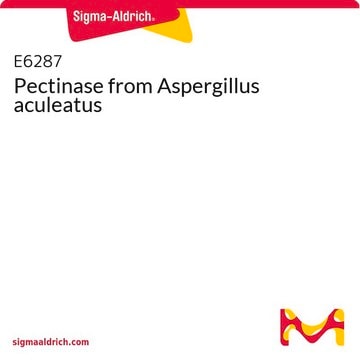G1763
β-Glutamic acid
≥98% (TLC), suitable for ligand binding assays
Synonym(e):
3-Aminopentanedioic acid
About This Item
Empfohlene Produkte
product name
β-Glutamic acid,
Assay
≥98% (TLC)
Form
powder
Methode(n)
ligand binding assay: suitable
Farbe
white to off-white
SMILES String
NC(CC(O)=O)CC(O)=O
InChI
1S/C5H9NO4/c6-3(1-4(7)8)2-5(9)10/h3H,1-2,6H2,(H,7,8)(H,9,10)
InChIKey
BBJIPMIXTXKYLZ-UHFFFAOYSA-N
Verwandte Kategorien
Biochem./physiol. Wirkung
Anwendung
Lagerklassenschlüssel
11 - Combustible Solids
WGK
WGK 3
Flammpunkt (°F)
Not applicable
Flammpunkt (°C)
Not applicable
Persönliche Schutzausrüstung
Eyeshields, Gloves, type N95 (US)
Analysenzertifikate (COA)
Suchen Sie nach Analysenzertifikate (COA), indem Sie die Lot-/Chargennummer des Produkts eingeben. Lot- und Chargennummern sind auf dem Produktetikett hinter den Wörtern ‘Lot’ oder ‘Batch’ (Lot oder Charge) zu finden.
Besitzen Sie dieses Produkt bereits?
In der Dokumentenbibliothek finden Sie die Dokumentation zu den Produkten, die Sie kürzlich erworben haben.
Kunden haben sich ebenfalls angesehen
Chromatograms
application for HPLCUnser Team von Wissenschaftlern verfügt über Erfahrung in allen Forschungsbereichen einschließlich Life Science, Materialwissenschaften, chemischer Synthese, Chromatographie, Analytik und vielen mehr..
Setzen Sie sich mit dem technischen Dienst in Verbindung.








